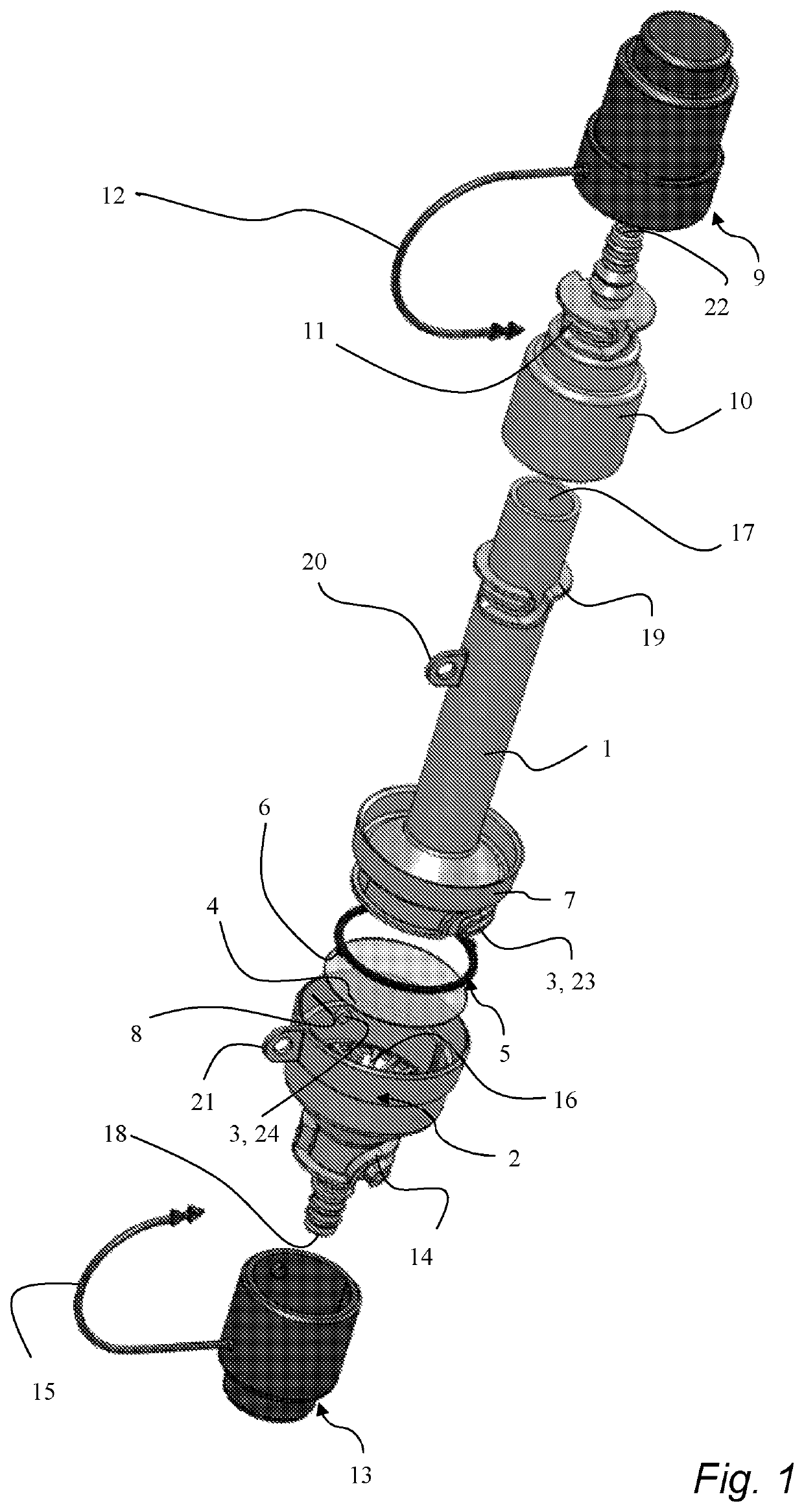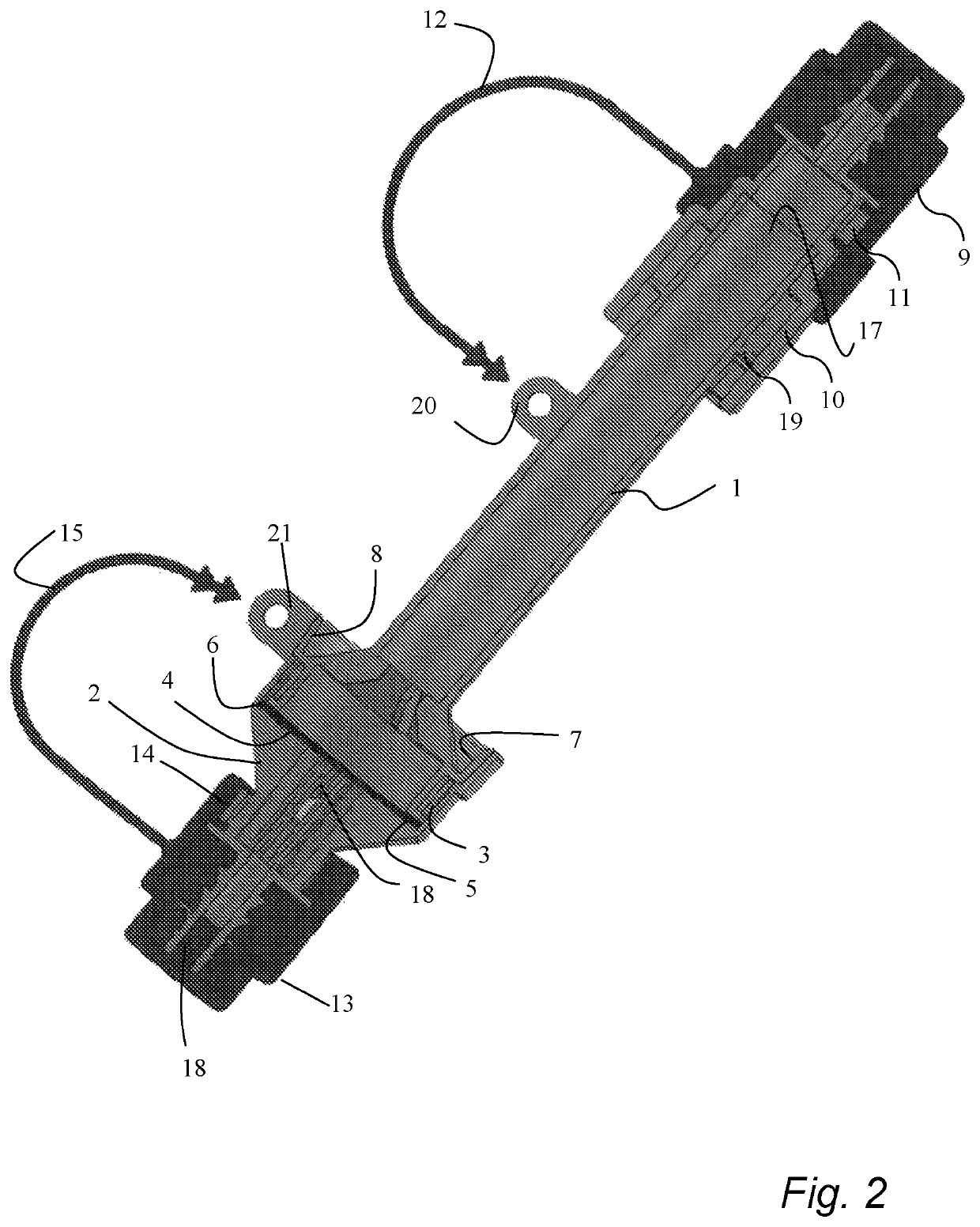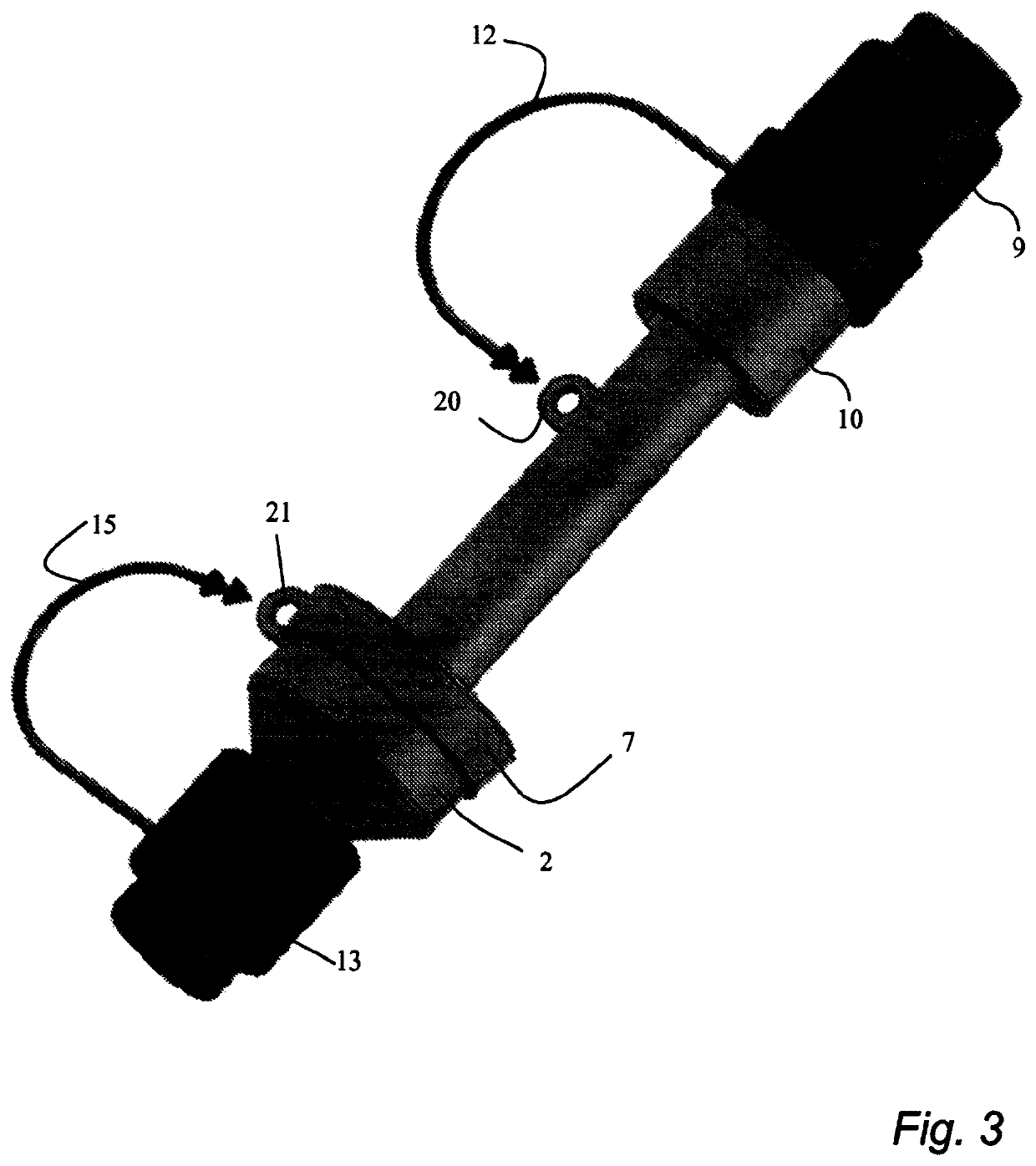Fluid-tightly sealable sampling device
a sampling device and sealable technology, applied in the field of fluid-tight sealable sampling devices, can solve the problems of false positive results, high cost for users, and inability to identify individual chemicals, so as to reduce the risk of manipulation and reuse of sampling devices, the effect of increasing liability
- Summary
- Abstract
- Description
- Claims
- Application Information
AI Technical Summary
Benefits of technology
Problems solved by technology
Method used
Image
Examples
Embodiment Construction
[0046]The expression “one or more substances” used throughout the application text means that two or more different substances in the fluid flow may be adsorbed by and react with one or more reagents at the same time within the sampling device. This is dependent on the choice of reagent or mixture of reagents present in the sampling device. In the following, the expressions “substance” and “substances” are sometimes used for simplicity reasons, but is nevertheless intended to mean “one or more substances”, unless otherwise is indicated or appears from the context.
[0047]The expression “one or more reagents” used throughout the application text is intended to mean that more than one type of reagent may be used when more than one type of substance in the fluid flow is to be analyzed. In the following, the expressions “reagent” or “reagents” are sometimes used for simplicity reasons, but is nevertheless intended to mean “one or more reagents”, unless otherwise is indicated or appears fr...
PUM
| Property | Measurement | Unit |
|---|---|---|
| inner diameter | aaaaa | aaaaa |
| length | aaaaa | aaaaa |
| pore diameter | aaaaa | aaaaa |
Abstract
Description
Claims
Application Information
 Login to View More
Login to View More - R&D
- Intellectual Property
- Life Sciences
- Materials
- Tech Scout
- Unparalleled Data Quality
- Higher Quality Content
- 60% Fewer Hallucinations
Browse by: Latest US Patents, China's latest patents, Technical Efficacy Thesaurus, Application Domain, Technology Topic, Popular Technical Reports.
© 2025 PatSnap. All rights reserved.Legal|Privacy policy|Modern Slavery Act Transparency Statement|Sitemap|About US| Contact US: help@patsnap.com



